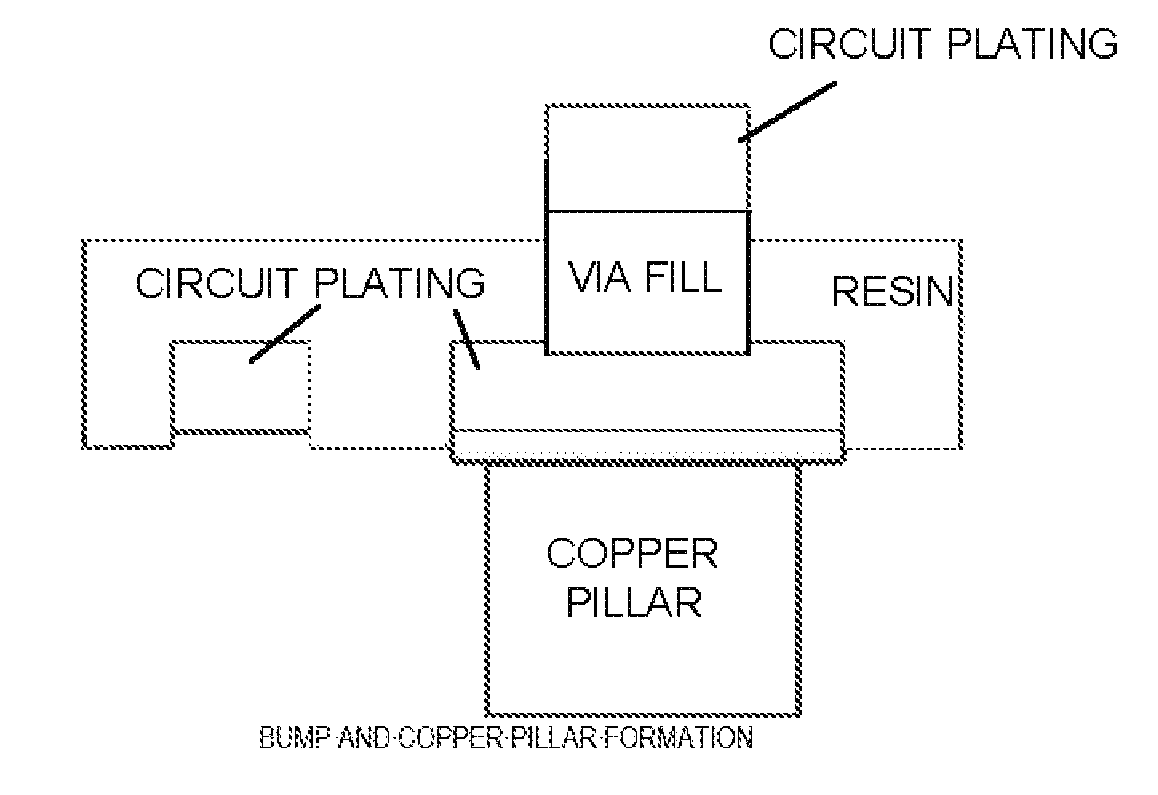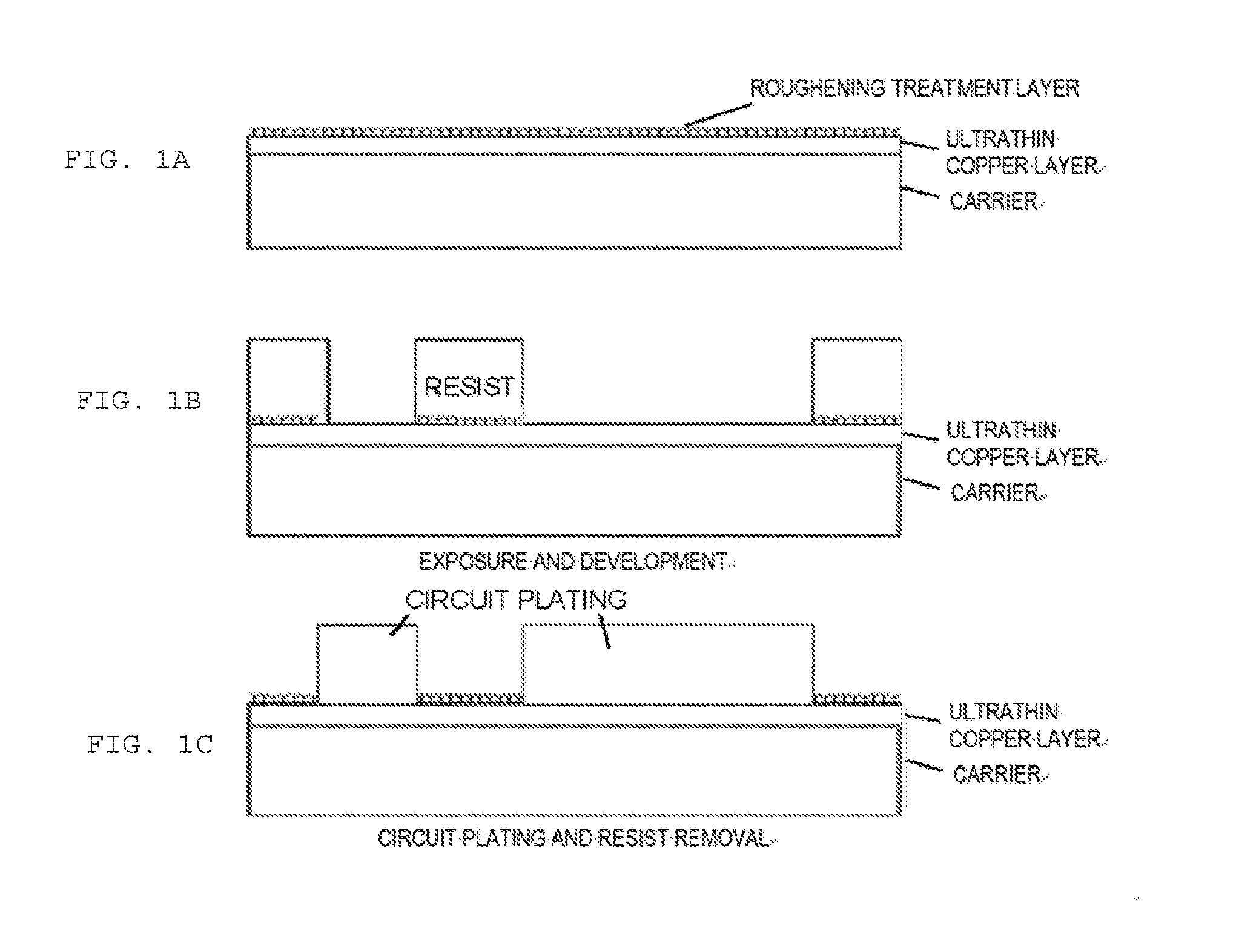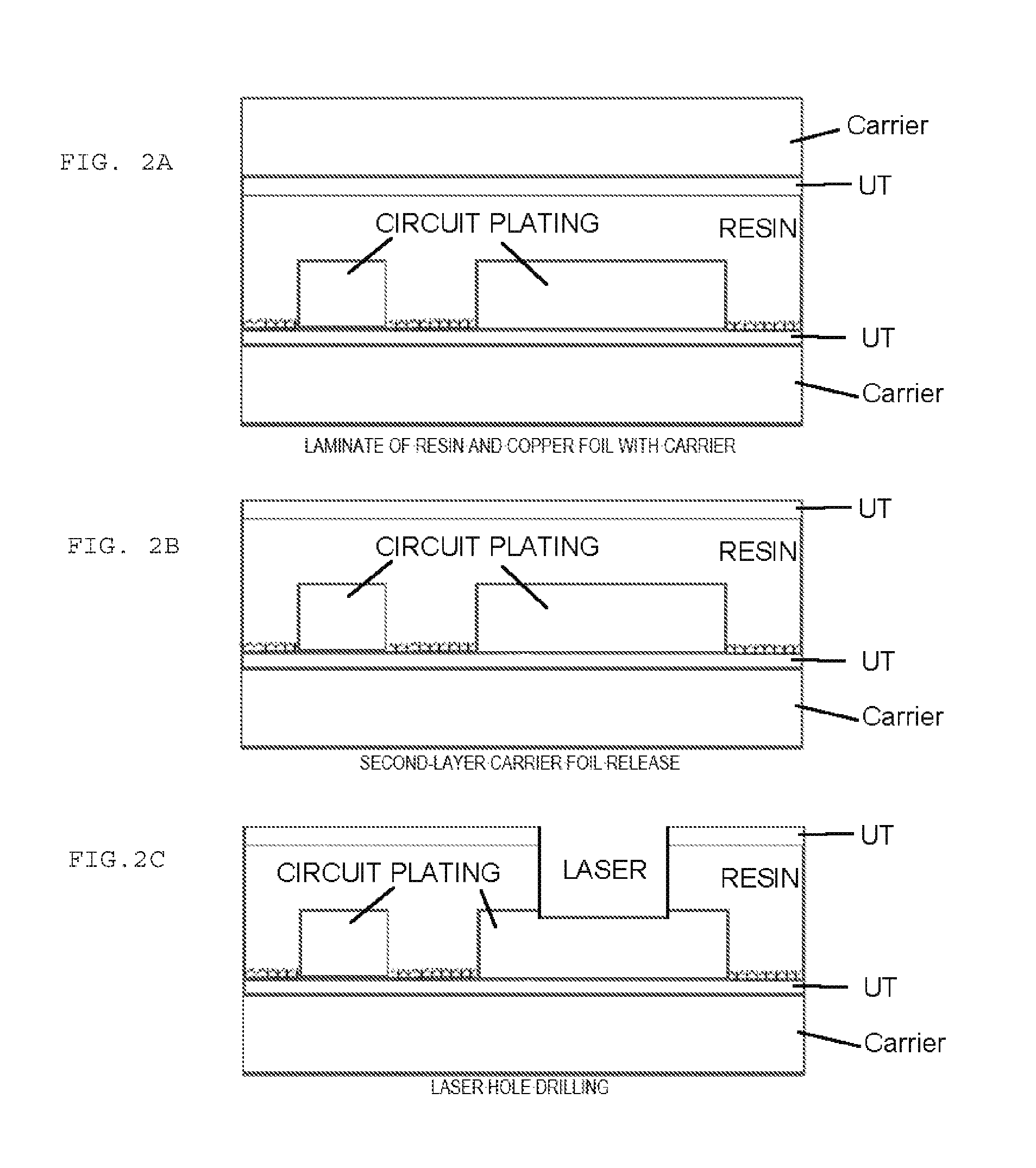Carrier-Attached Copper Foil, Laminate, Method For Producing Printed Wiring Board, And Method For Producing Electronic Device
a technology of carrier-attached copper foil and printed wiring, which is applied in the direction of printed element electric connection formation, other domestic articles, synthetic resin layered products, etc., can solve the problems of poor mechanical strength of ultrathin copper foil, easy breakage or wrinkles, and failure to achieve insulation between circuit patterns, etc., to achieve the effect of desirable fine circuit formability
- Summary
- Abstract
- Description
- Claims
- Application Information
AI Technical Summary
Benefits of technology
Problems solved by technology
Method used
Image
Examples
examples
[0441]The present invention is described below in greater detail referring to Examples of the present invention. However, the present invention is in no way limited by the following Examples.
(1) Fabrication of Carrier
[0442]The carrier was fabricated as follows.
Carrier Fabrication Method A
examples 4 and 11
[0450]A titanium rotary drum (electrolytic drum) was prepared.
[0451]The surface of the electrolytic drum was ground under specific electrolytic drum surface control conditions with an abrasive wheel grinding material of a grain size #3000 at a grinding stone rotation speed of 500 rpm. The electrolytic drum and electrodes were disposed inside an electrolysis vessel. The electrodes were disposed around the drum with a predetermined distance in between. Electrolysis was performed in the electrolysis vessel under the following conditions, whereby copper was deposited on the electrolytic drum surface while rotating the electrolytic drum.
Electrolytic Solution Composition
Copper: 80 to 110 g / L
[0452]Sulfuric acid: 70 to 110 g / L
Fabrication Conditions
[0453]Current density: 50 to 200 A / dm2
[0454]Electrolytic solution temperature: 40 to 70° C.
[0455]Electrolytic solution linear velocity: 3 to 5 m / sec
[0456]Electrolysis time: 0.5 to 10 min
[0457]The copper deposited on th...
examples 5 to 7
[0458]An 18 μm-thick electrolytic copper foil was fabricated using the electrolytic solution below. The interlayer was formed on the glossy surface side of the electrolytic copper foil.
Electrolytic Solution Composition
[0459]Copper: 90 to 110 g / L
[0460]Sulfuric acid: 90 to 110 g / L
[0461]Chlorine: 50 to 100 ppm
Leveling agent 1 (bis(3-sulfopropyl)disulfide): 10 to 30 ppm
Leveling agent 2 (amine compound): 10 to 30 ppm
[0462]The amine compound used had the following chemical formula.
[0463]In the chemical formula, R1 and R2 are selected from the group consisting of a hydroxyalkyl group, an ether group, an aryl group, an aromatic substituted alkyl group, an unsaturated hydrocarbon group, and an alkyl group.
Fabrication Conditions
[0464]Current density: 70 to 100 A / dm2
[0465]Electrolytic solution temperature: 50 to 60° C.
[0466]Electrolytic solution linear velocity: 3 to 5 m / sec
[0467]Electrolysis time: 0.5 to 10 min
Carrier Fabrication Method D
PUM
| Property | Measurement | Unit |
|---|---|---|
| pressure | aaaaa | aaaaa |
| trough depth Sv | aaaaa | aaaaa |
| depth Svk | aaaaa | aaaaa |
Abstract
Description
Claims
Application Information
 Login to View More
Login to View More - R&D
- Intellectual Property
- Life Sciences
- Materials
- Tech Scout
- Unparalleled Data Quality
- Higher Quality Content
- 60% Fewer Hallucinations
Browse by: Latest US Patents, China's latest patents, Technical Efficacy Thesaurus, Application Domain, Technology Topic, Popular Technical Reports.
© 2025 PatSnap. All rights reserved.Legal|Privacy policy|Modern Slavery Act Transparency Statement|Sitemap|About US| Contact US: help@patsnap.com



